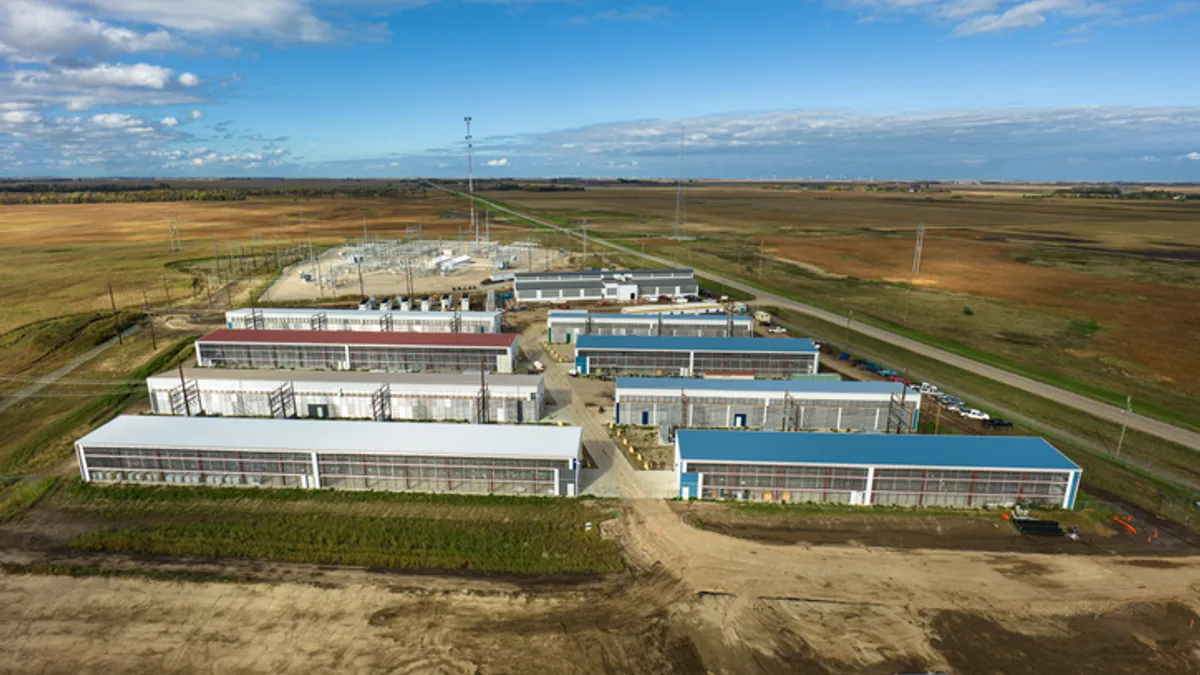California has been a leader on energy efficiency since the 1970s, and a new report last month from the Natural Resources Defense Council highlighted a series of impressive figures: Efficiency has saved residents $90 billion on their bills, helped create an industry employing hundreds of thousands of residents, and will have avoided the pollution from 41 large coal power plants by the end of the next decade.
But the big takeaway comes down to this: In order to meet aggressive efficiency and greenhouse gas reduction targets set by California Gov. Jerry Brown, the state will need to save a cumulative 93,000 GWh over the next 15 years through customer-funded efficiency programs for both investor- and publicly-owned utility territories, as well as set new minimum energy standards for buildings and appliances.
“It's a huge step,” said Lara Ettenson, who directs NRDC's California energy efficiency policy and is one of the report's authors.
While California is ahead ahead of the curve when it comes to meeting efficiency savings projected in the state’s plan to cut greenhouse gas emissions by 2020, Gov. Brown wants the state to double efficiency savings by 2030. And according to NRDC's analysis, at its current pace California would “fall short.”
But the good news, said Ettenson, is that while the goal is aggressive there is ample efficiency opportunity remaining to meet it.
“We have a lot more we think is possible. We're just not sure we can get customers to do what we think they need to,” she said. “It will take a whole village to solve this problem … and continue to grow the economy at the same time. I'm encouraged by the efforts in California. We really just need to step it up.”
The biggest opportunities
The biggest opportunities for efficiency in California are a mix of improvements to large buildings, and changes to state policy.
“There is a lot of efficiency we can gain in commercial buildings, in public buildings, and to get at it we will need some policy changes,” Ettenson said.
Many of the assumptions underlying efficiency programs involve the idea that if a customer is going to make a building upgrade then they will bring the building all the way up to code. That's not reality, said Ettenson, and gaps between those assumptions and how customers actually act mean there are large amounts of efficiencies that can be captured through changes in policy.
“The reality in the field is that customers will do whatever they can to avoid having to trigger a code – which leave s a lot of efficiency on the table. But our assumptions are not matching what's happening in reality,” Ettenson said.
But both the California Public Utilities Commission and the California Energy Commission are currently examining the issue, she said. “We need to find a way to reconcile our assumptions, to design programs that will work.”
Other opportunities are being enabled by technology. California can do a better job of leveraging data analytics, Ettenson said. Consumers now have access to more data as well, and in-home energy displays can help them better understand their consumption.
And the largest growth of energy use comes from the devices consumers plug into an outlet, Ettenson said. The state will need to work on “how to accelerate the efficiency of these technologies and how to let customers know which types of products they should be using to reduce their energy use.”
All types of devices can be more efficient, “especially as we push the envelope in terms of bringing new emerging technologies to market.”
Valuing energy efficiency
One of the biggest, and broadest policy changes NRDC would like to see is in the way energy efficiency is valued. By adding in more non-energy benefits, more efficiencies will become cost-effective and available for utilities and other providers to go after them.
“The way we assess cost-effectiveness,” said Ettenson, is basically a reflection of “how we value energy efficiency in terms of getting the services we want and reducing pollution. … If you have really conservative inputs that means there is less efficiency to go after, and utilities will have to use more expensive power to meet energy needs.”
NRDC's report recommends cost-effectiveness methodologies should include “all quantifiable non-energy benefits,” such as water savings, as well as approximations for non-energy benefits like comfort, which are more difficult to quantify.
“Alternatively, the non-energy costs could be removed from the formula, such as the added cost of expensive trim on an efficient window,” the report notes.
Making changes to policies like this, in California or in other states, will require taking the debate to state utility commissions, though many have already begun making changes to some of their assumptions and inputs, Ettenson said.
Prop 39: Green jobs controversy brewing
Just days before NRDC's efficiency report was released, the Associated Press published a story finding job creation from California's Clean Energy Jobs Act was seriously lagging predictions. The story helps illustrate both how urgently the state is going after efficiency, and also how politically fraught the policy debates can be.
Passed in 2012, Proposition 39 closed a corporate tax loophole and directed half of those funds to be used creating clean energy jobs in schools, especially concerning efficiency upgrades. While 11,000 jobs were expected annually, the AP's report found only 1,700 had been created in the three years the program was in place.
While this prompted expected calls for oversight – Senate Minority Leader Bob Huff, a Republican, has called for hearings – backers say it is too soon to judge a program that took a deliberate approach to using state funds.
The first expenditure plan for the program was only approved in April last year, supports say, and program guidelines continue to be revised.
And while the program's oversight board has yet to meet, members say that's because of California Energy Commission regulations.
"Yes, it’s true that the oversight board has never met,” Kate Gordon, a member of the Citizens Oversight Board and vice chair of the Paulson Institute, said in a statement. “But that’s not because we’re just a 'rubber stamp' created by the political process — it’s because under the CEC’s regulations, we aren’t supposed to meet until this fall, when we’ll be able to review and discuss the first tranche of data from the completed Prop 39 projects that have been underway across the state during the past year.”
Senate President pro Tempore Kevin de León, one of the primary supporters of Prop 39, has defended the measure, saying it is “irresponsible and more than a little misleading to prejudge a long-term, multi-year program this early in the process.”
NRDC's Ettenson largely agreed with that assessment, saying great pains have been taken to create a process that is transparent and deliberate rather than moving ahead as quickly as possible.
“This takes time,” she said. “While we're eager for things to happen quickly … they've created a really strong and deliberative process.”
Scaling up California's gains
The American Council for an Energy-Efficiency Economy ranks California 2nd in the nation for efficiency, citing among other things the state's incentives for energy efficiency investments to schools, industry, residential consumers, and the public sector.
The state has spent four decades putting in place policies that target energy efficiency first, before pursuing other resources, said Ettenson. Other states looking to mimic California's success will need to adopt similar policies, and “that has to be done at the leadership level.”
Among the policies NRDC is helping push: Using energy efficiency as the first resource option; making utilities financially whole for efficiency investments, ensuring efficiency programs are funded so that they can be scaled up and setting strong targets.
“There are a number of states already moving in this direction,” Ettenson said. While some include the “usual suspects” like Vermont and Massachusetts, she said NRDC is also working with Midwestern states which are beginning to adopt similar policies.
“What we need to do is continue to ensure the policies are strong and energy efficiency is available to help customers save money,” Ettenson said. Though she cautioned, "there will be states which will be more challenging than others.”
NRDC's report recommended taking a unified approach to boosting efficiency targets and policy. In California, that means getting the state's ISO, CPUC, CEC and air regulators all on the same page. Coordinating programs between state and local governments, utilities and third-party providers will ensure that new technologies make it to market and the industry is always hunting down available efficiencies.
“Having programs run by various implementers in the state and local governments, third-party providers and utilities, helps bring new technologies to market so they are available to everyone,” Ettenson said. “Once they're accepted by the majority of the market and they're more economically effective then they become the standard, and we start the process all over again.”























